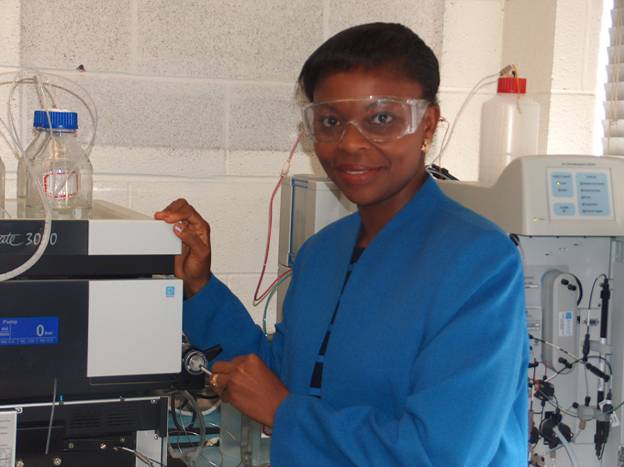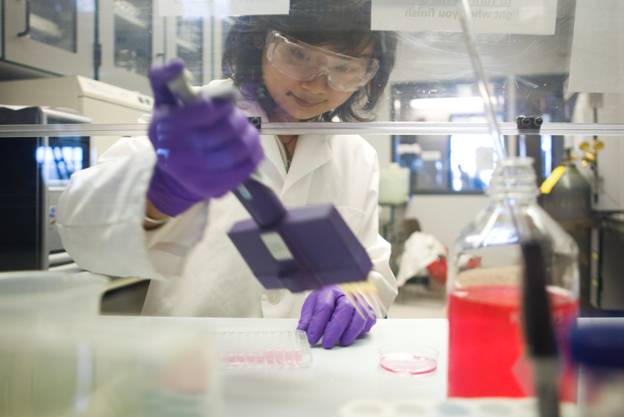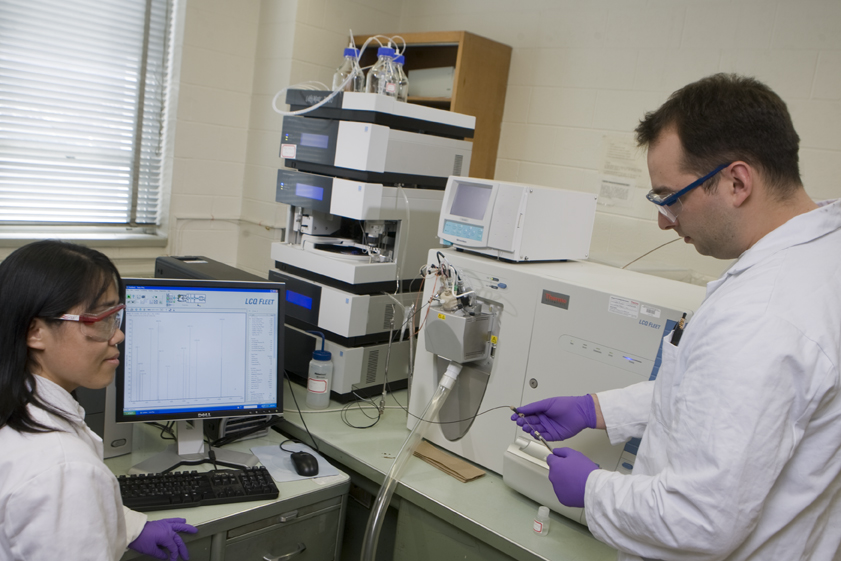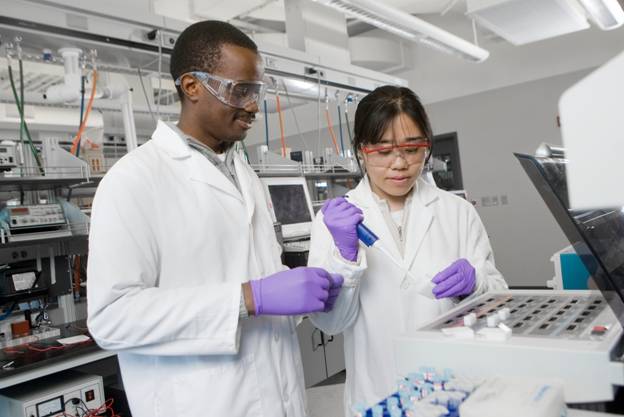







Research Interests
Our research is focused on the basic and applied aspects of bioanalytical, materials and environmental chemistry. We are interested in the design and development of chemical and biological sensors that are inspired by the recognition processes found in nature. Perhaps the best and most sophisticated recognition process is found in the human body. For example, our senses of smell, tastes and ability to respond to temperature variation all occur via living polymer interfaces. Even cellular processes are regulated by cell walls, comprising dynamic macromolecules that are capable of sensing and responding to specific chemical stimuli. Hence, by learning from nature, we are developing smart sensors that can be used for applications in environmental monitoring, process control and biomedical testing.
Interfacial Studies based on Electroless & Electrochemical Deposition
Our Group has extensive expertise in interfacial reaction
at metal-metal surfaces using electroless plating and has specifically studied
the mechanism of electroless gold, nickel and cobalt. We employ a combination
of surface, structural and morphological techniques to monitor the interfacial
reactivity and plating rates, including electrochemical quartz crystal
microbalance (EQCM), scanning electron microscopy (SEM), energy-dispersive spectroscopy
(EDS), and X-ray photoelectron (XPS) analysis. We have also developed EQCM
based mass sensor arrays for correlating the bath chemistry with the overall
plating quality on industrial wirebond samples.
We have
shown that the mechanism of electroless gold deposition follows a multi-step
electron transfer process during the oxidation of dimethylamine borane (DMAB)
on gold in alkaline media. According to this mechanism, the initial chemical
step is the SN2 substitution reaction of DMAB with
State-of-the-art Instrumentation & Laboratory Facilities
Sadik’s group has over 2000 ft2 of space, located in 4 modern laboratories in the Chemistry building. These laboratories are well equipped with state-of-the art instrumentation and microfabrication tools, some of which can be viewed here below:Current Projects
Chemical Biosensors
The design of biosensors requires the successful immobilization of
biological reagents such as antigen, antibody, enzymes, DNA or cells. A number
of approaches for immobilizing antibody and dsDNA layers on electrodes have
been reported, yet the quest for a molecularly organized, but reproducible immobilization
continues to pose a challenge. A major research question is how to design the
interface between the transducer and the biospecific layer for efficient
molecular recognition. Basic questions include the exact nature of the
intermolecular forces at the sensor/biospecific layer and sensor/analyte
interfaces, and also whether these forces are responsible for the partial
discrimination between different chemical and biochemical compounds. The key is
to develop a molecular understanding of the sensor-analyte interactions to be
able to predict sensor characteristics even in complex mixtures. Understanding,
engineering and predicting the interactions between molecules require the
knowledge of the available types of interactions and a rational design of the
sensor chemistries.
Synthesis of Cross Selective Arrays of Polymers and Device
Fabrication
We are using different approaches to fabricate conducting polymer membranes and hybrid polymer inorganic composites. Examples include composites of poly (amic acid)-metallic gold, silver, cobalt and palladium nanoparticles using pyromellitic dianhydride (PMDA) and 4,4’-oxydianiline (ODA).
Electroless and Electrolytic Processes: We are also studying novel plating techniques used in the fabrication of electronic packages and chip-scale products. Electroless plating technique can be used to metallize deep contact via for wirebond applications and for mounting chips to chip carriers. We are using on-line sensors to assess bath performance and to monitor the correlation between the bath chemistry and the overall quality of plated circuitry.Pattern
Recognition and Machine Learning:
We are exploring the effective use of polymer arrays coupled with
pattern recognition and machine learning for the detection and classification
of organophosphate nerve agents’ stimulants. For organophosphates and volatile organics, we showed a
significant 168% specificity improvement and a 40.5% positive predictive value
improvement using the s2000 kernels at 100% and 98% sensitivities when compared
to conventional system.
Bioelectrochemistry
We are
studying the theoretical and experimental approaches for monitoring the
interfacial biomolecular reaction using impedance spectroscopy. We have
demonstrated how to establish electrical communication between immobilized
antibodies (Abs) and the electrode
surfaces resulting in sensors having detection limits in the low pg/mL.
Opportunities exist to explore the use of surface plasmon resonance with
impedance spectroscopy as novel characterization tools.
Our
group has active and ongoing research collaboration with the following: